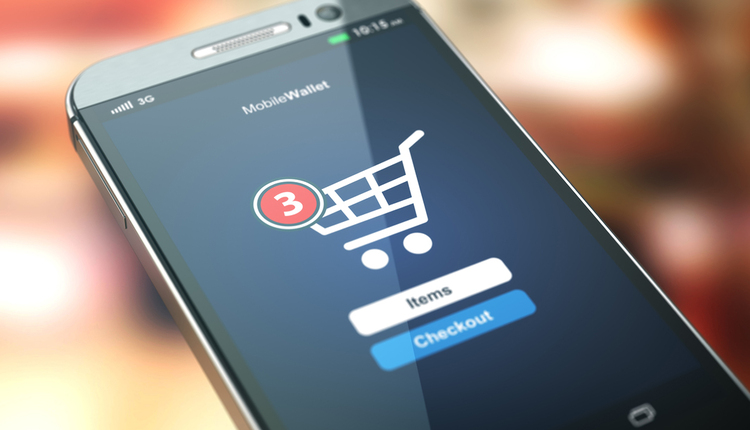The ecommerce B2C business is expected to reach $1.77 trillion in 2015…WOW! This market is growing at 20%+ per year and putting many challenges on the infrastructure that supports the selling and distribution of products. This is also creating the perfect storm in the parcel industry. I would like to touch on three topics: (1) Is the supply chain industry adapting; (2) How are the parcel providers changing to meet the customers' delivery needs; and (3) Who is the customer?
This is one of the most exciting times in the world of commerce but the market is changing rapidly. It will be the “Jacks” of the world that will be the leaders and survivors. Here are the three areas that will impact the world of ecommerce:
Is the Supply Chain Industry Adapting?
There has been a flurry of activity in the past five years where companies and 3PLs have changed their focus on building DC Networks and infrastructure that supports the ecommerce world. They can no longer provide effective service from the corner of the building. There has been a vast amount of investment in developing optimized networks, material handling equipment and order processing technology. Some organizations are building dedicated facilities to handle just their ecommerce business, and many are utilizing a 3PL until they can build the volume and scale to support their own network. Many of the major retailers are competing with small e-tailers with minimal operating cost. The shipper and customer can be anywhere in the world… more on this below.
How Are the Parcel Providers Changing?
It is clear that the leaders are adapting to change and planning for the future. One of the biggest changes in 2014 is the USPS rate change for its Priority Mail service. We can truly say that the third competitor has “arrived” in the US…the USPS ! It has positioned itself to be the market leader in the residential delivery market, which is where most of the ecommerce traffic is going. In fact, both Fed Ex and UPS use the USPS for the final mile delivery of their SmartPost and SurePost services. As the USPS builds its residential parcel delivery business, it will get stronger and more effective. It would be remiss of me to not mention Amazon because it has built a infrastructure that is second to none in the ecommerce business today and is well-positioned to offer its own delivery through a private fleet or the utilization of multiple courier companies. The global delivery market is still the wild, wild west. DHL still commands a leading position from their vast global network and international customs expertise. However, there are many different options available that have a global postal element to the delivery equation. The international community is still struggling with the service/cost relationship and the ability to provide tracking information.
Who Is the Customer?
The ecommerce customer is anyone, anywhere at any time. Have you ever ordered something on the web and wondered if it actually shipped from an actual business or someone’s garage? Most likely, you will never know. If the quoted transit is a little longer, it might be coming from outside the US. On the flipside of this, the etailer does not know you either (some of the larger retailers are gathering more information on you through your buying habits and the ability to handle big data). The challenge for the global ecommerce business is that the consumer (you and me) are changing on a daily basis and are not predictable. This makes it difficult for the etailer to create a close relationship with the buyer. However, a great buying experience will bring that person back but a bad buying experience and the consumer will never come back and will tell 20 of their friends about their experience. Not to mention what they could do in the social media space. The moral of this story is that every customer is king… all order sizes.
In summary, we are seeing the infrastructure to support the ecommerce world build capacity and are constantly looking to make improvements to their capabilities. The consumer is ever changing and it is up to all supply chain entities and parcel service providers to “jump over the candlestick” for their customers.
Michael J. Ryan is the Executive Vice President at Pro Star Logistics and has over 25 years’ experience in the parcel industry. He can be reached at 708.224.1498 or michael.ryan@prostar.com.
This is one of the most exciting times in the world of commerce but the market is changing rapidly. It will be the “Jacks” of the world that will be the leaders and survivors. Here are the three areas that will impact the world of ecommerce:
Is the Supply Chain Industry Adapting?
There has been a flurry of activity in the past five years where companies and 3PLs have changed their focus on building DC Networks and infrastructure that supports the ecommerce world. They can no longer provide effective service from the corner of the building. There has been a vast amount of investment in developing optimized networks, material handling equipment and order processing technology. Some organizations are building dedicated facilities to handle just their ecommerce business, and many are utilizing a 3PL until they can build the volume and scale to support their own network. Many of the major retailers are competing with small e-tailers with minimal operating cost. The shipper and customer can be anywhere in the world… more on this below.
How Are the Parcel Providers Changing?
It is clear that the leaders are adapting to change and planning for the future. One of the biggest changes in 2014 is the USPS rate change for its Priority Mail service. We can truly say that the third competitor has “arrived” in the US…the USPS ! It has positioned itself to be the market leader in the residential delivery market, which is where most of the ecommerce traffic is going. In fact, both Fed Ex and UPS use the USPS for the final mile delivery of their SmartPost and SurePost services. As the USPS builds its residential parcel delivery business, it will get stronger and more effective. It would be remiss of me to not mention Amazon because it has built a infrastructure that is second to none in the ecommerce business today and is well-positioned to offer its own delivery through a private fleet or the utilization of multiple courier companies. The global delivery market is still the wild, wild west. DHL still commands a leading position from their vast global network and international customs expertise. However, there are many different options available that have a global postal element to the delivery equation. The international community is still struggling with the service/cost relationship and the ability to provide tracking information.
Who Is the Customer?
The ecommerce customer is anyone, anywhere at any time. Have you ever ordered something on the web and wondered if it actually shipped from an actual business or someone’s garage? Most likely, you will never know. If the quoted transit is a little longer, it might be coming from outside the US. On the flipside of this, the etailer does not know you either (some of the larger retailers are gathering more information on you through your buying habits and the ability to handle big data). The challenge for the global ecommerce business is that the consumer (you and me) are changing on a daily basis and are not predictable. This makes it difficult for the etailer to create a close relationship with the buyer. However, a great buying experience will bring that person back but a bad buying experience and the consumer will never come back and will tell 20 of their friends about their experience. Not to mention what they could do in the social media space. The moral of this story is that every customer is king… all order sizes.
In summary, we are seeing the infrastructure to support the ecommerce world build capacity and are constantly looking to make improvements to their capabilities. The consumer is ever changing and it is up to all supply chain entities and parcel service providers to “jump over the candlestick” for their customers.
Michael J. Ryan is the Executive Vice President at Pro Star Logistics and has over 25 years’ experience in the parcel industry. He can be reached at 708.224.1498 or michael.ryan@prostar.com.








